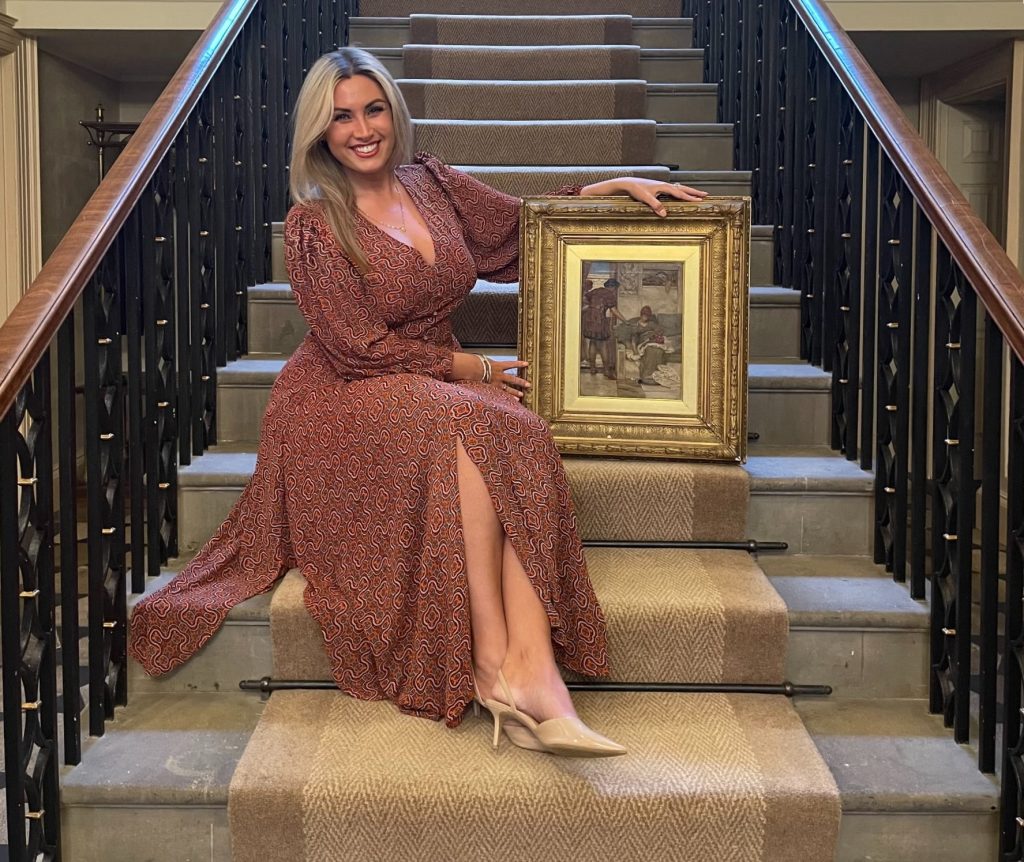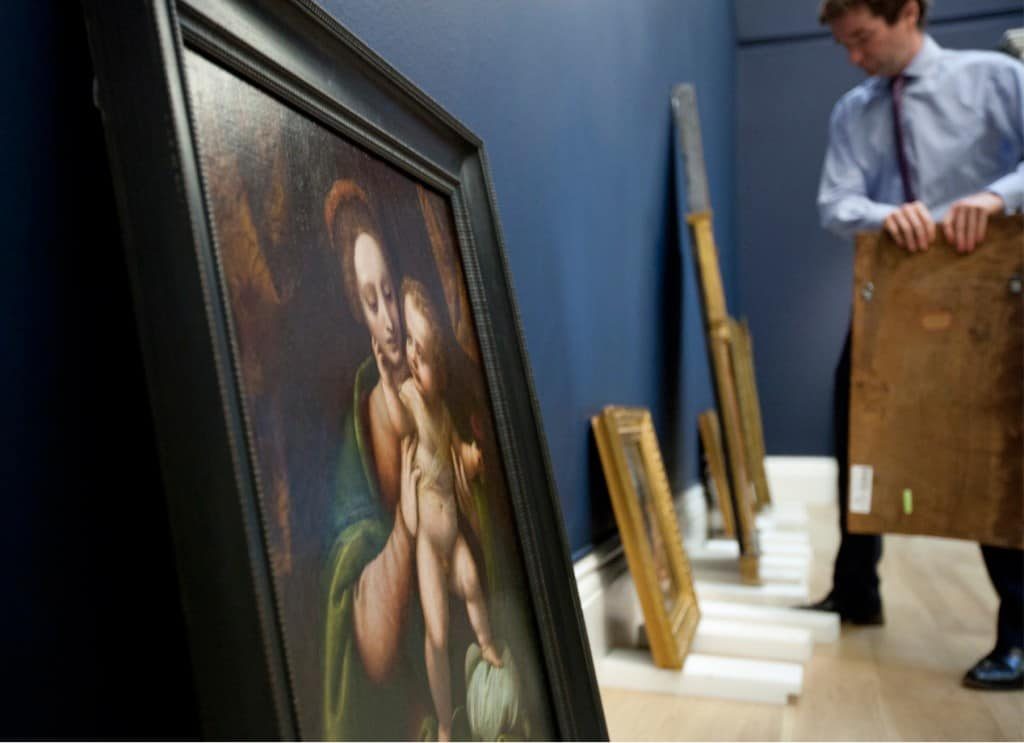 What inspired you to pursue a career in the art and auction industry, and what continues to motivate you today?
What inspired you to pursue a career in the art and auction industry, and what continues to motivate you today?
From a very young age I loved to draw, which was encouraged by my parents who ran a graphic design agency from the ground floor of our family home. I was surrounded by the world of art and art business from birth. I was always the creative type and art, drama, and music were my passion throughout my formative years. As a student, the first time I attended a Sotheby’s sale, I thought it was the perfect marriage of all three—the auctioneer as a conductor, the theatrical energy of the saleroom, and, of course, the incredible artworks going under the gavel. It is still that energy and buzz of an auction day that motivates me now. There is nothing I love more than to stand on the rostrum and, when I am fortunate enough to achieve world record prices, there is no better feeling.
Can you share how the MA in Fine and Decorative Art and Design program at Sotheby’s Institute helped shape your understanding of the art market?
The transition from my BA in Art History to the MA in Fine and Decorative Art and Design was significant, and the program played a crucial role in deepening my understanding of the art market. Art history teaches you about significant periods and movements throughout history, but the MA in Fine and Decorative Art and Design program challenges you to examine how works of art—ranging from the Renaissance to the 20th century—are regarded today and how their importance and intrinsic value may have shifted over time due to changing fashions, cultural influences, and social and economic climates.
The course taught me not to assume that artworks are exceptional simply because the artist is a household name, but rather to ask: Why are these pieces considered significant? What makes them so valuable? Are they truly well-painted and well-crafted? What ultimately determines their worth in the art market?
What were the most valuable skills you gained during the MA in Fine and Decorative Art and Design program, and how do you apply them in your career?
The program emphasized the importance of handling objects to truly understand and appreciate them—an approach I apply daily in my career. As a valuer, I often receive images of items on which clients are seeking advice. It is incredible how works of art can appear to be one thing but turn out to be something entirely different. When you handle an object, you immediately gain a sense of the piece. You can determine what materials were used to create it and assess not only its appearance but also how it feels and sounds. Is it as heavy as it ought to be? Does the base show signs of age and wear consistent with something hundreds of years old?
To properly assess the quality—and, indeed, the authenticity—of an object, one must always handle it. Only then can any damage or restoration be fully revealed.
What qualities do you think are essential for success in auctioneering?
My biggest advice for any aspiring auctioneer is to be yourself. Confidence and personality are key to commanding a room, and enthusiasm for the art will naturally engage bidders. Auctioneering is a privilege, and when you genuinely love what you do, it shines through. The moment you try to be someone else, you lose the crowd.
People attend auctions to invest in luxury items—it is an enjoyable experience, and you want all bidders to leave feeling like winners. Of course, not everyone can take the item home, but at some point during the sale, they will hopefully have felt as if they owned it… if only for a moment.
The Traveling Auctioneers is a TV show that helps families turn unwanted items into winning lots. How accurately do you think the show captures the excitement and challenges of working in auctions?
It is an absolute joy to present The Traveling Auctioneers and help people declutter and sell items they no longer use or need. The show explores exactly what a valuer’s typical day looks like, from visiting clients in their homes, unearthing hidden treasures, and learning about the provenance and history of how the items ended up in their possession. I think the show also very sympathetically highlights how objects can very often hold huge sentimental value and evoke memories of their childhood or reminders of their loved ones—often, we see that objects hold far greater emotional value than monetary value.
Once people have decided to proceed with selling, it is then that we see a whole new raft of emotions when it comes to auction day! It is an exciting experience but also a nervous one—especially if it is their first auction. The anticipation of what might happen and where their objects might end up—often with pieces selling abroad and, sometimes, on the show, selling to members of the audience!
The excitement of being a valuer and auctioneer is being able to help people, either by raising funds for them to enjoy new experiences or donating money to charities of their choice. The challenges are to ensure that they are comfortable with every decision made along the way and to help in managing emotions when their possessions find new homes. The show beautifully captures the entire process, and I am honored to be a part of it.
How do you think The Traveling Auctioneers might influence public perception of the art and auction worlds?
I hope the program illustrates that auctions are a fun and exciting experience that anyone can attend and enjoy. Often, auctions are thought to be quite intimidating and daunting, especially if people have not attended one before. I hope the show emphasizes how relaxed auctions can be and that there is never any obligation to bid or partake—one can simply turn up and enjoy the atmosphere!
I think the show also helps to highlight the difference in value between the retail sector and the auction market. Auction values, particularly with jewelry, are based on more of a science than just their aesthetic merit. For example, gemstones are mainly valued on their cut, clarity, color, and carat weight, whereas retail values often focus more on their visual and fashion appeal. I think the show manages people’s expectations compassionately and explains the trends we see in the ever-fluctuating auction market.
If you could give one piece of advice to students aspiring to work in the art business, what would it be?
My advice would be to grasp any opportunity to network. The art world is full of the most knowledgeable and fascinating characters, and there is always something to learn. Although it is a huge and ever-growing industry, it is remarkable how small it can feel at times, as you will find that you frequently encounter the same connections. It is so important to nurture the relationships you build throughout your career, and ultimately, it makes the job all that more enjoyable.
What advice or tips would you give to Sotheby’s Institute applicants?
The course affords you unparalleled exposure to galleries and museums, and I could not be more grateful to have had such an incredible launchpad from which to begin my career in the art world. The year flies by so quickly, so remember to utilize all of the sources on offer to you and make the most of the time you have in person with the lecturers. Absorb every moment.
Build your art expertise with our Master's programs.
